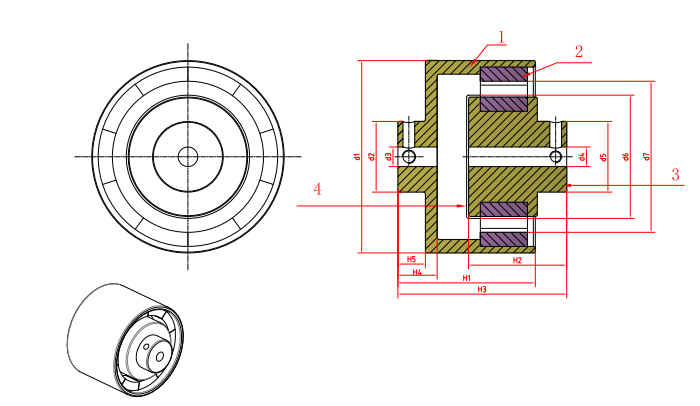PRODUCTS


Magnetic couplings
Catalog:
E-mail:
WhatsApp:
keyword:
Detail
A magnetic coupling is a component which transfers torque from one shaft to another using a magnetic field, rather than a physical mechanical connection. It is widely used in industrial fields.
STRUCTURE AND PRINCIPLE
The magnetic couplings consist of three parts: the inner magnetic hub, the outer magnetic hub and the containment barrier. Both the inner and outer hubs consist of a series of rare earth magnets to form a stable magnetic field. By driving one magnetic hub, torque is transmitted magnetically to the other magnetic hub. This can be done through the air or through a non -magnetic containment barrier such as stainless steel or aluminium or plastics, allowing complete isolation of the inner magnetic hub from the outer magnetic hub. It can also adjust the maximum transmittable torque by changing the strength of the magnetic field.

CLASSIFICATION AND MATERIALS
Magnetic transmission couplings are divided into planar magnetic transmission couplings and coaxial magnetic transmission couplings. The magnets of the former are magnetized axially, and the coupled magnetic poles are arranged axially; the magnets of the latter are magnetized radially, and the coupled magnetic poles are arranged radially.
The magnetic materials mainly include ferrite, NdFeB and samarium etc. NdFeB is widely used in magnetic transmission couplings due to excellent magnetic properties and less cost.
APPLICATION AREAS AND ADVANTAGES
Magnetic couplings are widely used in chemical equipment, electric power equipment, and high-end equipment like cars and aeroplanes. For example, magnetic pumps are widely applied in petrochemical, pharmaceutical and other fields to prevent waste and pollution caused by leakage.
Benefits of the magnetic couplings include:
Non-contact design for wear-free, maintenance-free operation
High reliability
No leakage
Performs in different environments
All in all, magnetic couplings play an important role in modern industry with their advanced magnetic transfer principle and a wide range of applications. It not only improves the efficiency and safety of mechanical equipment, but also reduces operation and maintenance costs.
Featured Products
Messages
